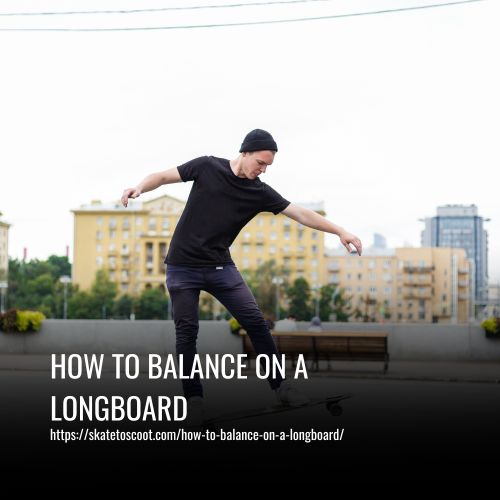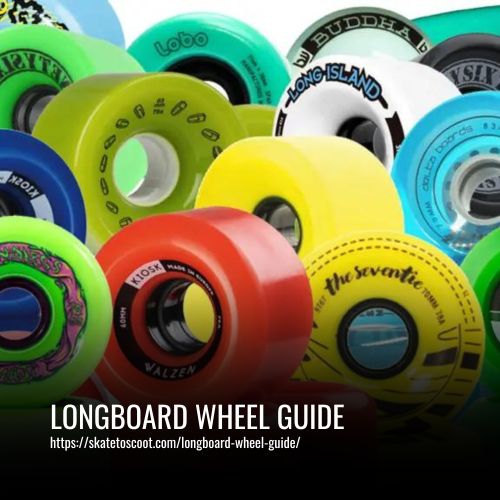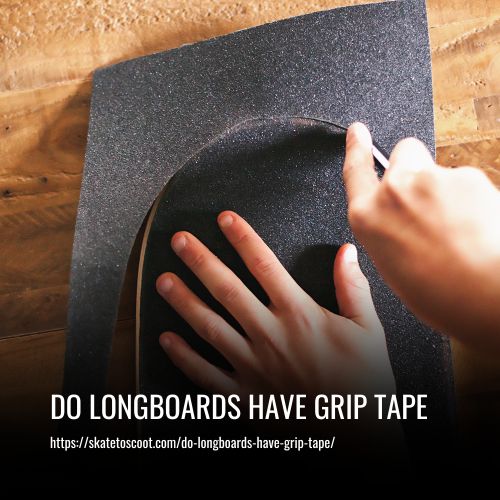As an Amazon Associate we earn from qualifying purchases.
Are you ready to take your longboarding skills to the next level? Balancing on a longboard is a crucial skill that every rider should master. Whether you’re a beginner or an experienced rider looking to improve your balance, this article will provide you with the tips and techniques you need to stay steady on your board.
Balancing on a longboard may seem intimidating at first, but with practice and the right guidance, anyone can achieve stability. Longboarding is not only a fun and thrilling activity, but it also requires a good sense of balance and control. By mastering the art of balancing, you’ll be able to confidently navigate turns, perform tricks, and enjoy a smoother ride.
In this article, we will explore various techniques and exercises that will help you improve your balance on a longboard. Whether you’re a complete beginner or have been riding for years, these tips will help you enhance your skills and take your longboarding to new heights. So, let’s dive in and discover the secrets to mastering balance on a longboard!

How to Balance on a Longboard
Longboarding is a popular recreational activity that provides a smooth and fast way to get around. Whether you’re a beginner or an experienced skateboarder looking to try something new, learning how to balance properly on a longboard is essential for a safe and enjoyable ride. Follow these simple steps to improve your balance and maintain control on your longboard.
- Find a flat and smooth surface: Start by setting your longboard on a flat and smooth piece of pavement, away from traffic or any other obstacles. This will provide a stable and safe environment for practicing your balancing skills.
- Choose your stance: Decide if you prefer a regular or goofy stance. In a regular stance, your left foot will be at the front of the board, while your right foot will be at the back. In a goofy stance, it’s the opposite. Experiment with both stances to find the one that feels most comfortable for you.
- Start rolling: Place your stable foot (usually your dominant foot) on the board in the chosen stance. Keep this foot steady on the board while facing forward. Push off from the ground using your other foot to gain momentum and speed. As you gain speed, balancing should become easier.
- Maintain speed and balance: Once you’ve reached a comfortable speed, swivel your steady foot 90 degrees so that it faces the side of the board. Bring your other foot up onto the board, also facing the side. This position will help you maintain balance and control.
- Use foot braking for control: Lower one foot to the ground to push off and maintain your speed. If your speed decreases or you feel wobbly, lower your foot for another push. Foot braking is an important skill that allows you to control your speed and maintain balance.
- Lower your center of gravity: If you feel unsteady at first, bend your knees slightly to lower your center of gravity. This will help you maintain balance and control as you ride.
- Engage your upper body: Spread your arms out for balance as you ride. This will help you stabilize your body and maintain control of the longboard.
Remember to wear appropriate safety gear, such as a helmet and protective pads, especially when attempting new tricks or riding in more challenging environments. With a bit of practice and muscle memory, you’ll soon be able to balance on your longboard with ease and enjoy the freedom and excitement of longboarding as a form of exercise and recreation.
Ways To Improve Your Longboarding Experience
Improving at longboarding requires practice, skill, and implementing techniques correctly. Here are five ways to improve your longboarding experience and ride with confidence:
1. Work on Your Balance:
Improving your balance is crucial for longboarding. Start by working on your static balance, which will help you transition into moving balance. With better balance, you’ll have more control over your longboard and be able to stop, turn, and slow down safely.
2. Find Your Stance:
Choosing the right stance is essential for comfort and maneuverability. There are two stance styles: regular and goofy. Place your dominant leg at the back, as this will determine your direction and movements. Practice maintaining balance and shifting your weight to slow down or come to a complete stop.
3. Carry Essential Tools:
Being prepared with essential longboarding tools ensures a smooth ride. Learn how to use tools to fix problems with your board, such as loosened wheels, trucks, or bearings. Familiarize yourself with every part of your longboard to maintain its performance.
4. Use the Right Board:
Selecting the right longboard for your needs is crucial. Consider your weight, height, and skill level to choose a board that suits you best. Different longboards are designed for specific activities like downhill, freestyle, or dancing. A properly chosen board will enhance your ability to manage and direct your longboard, allowing you to develop new skills.
5. Learn to Fall:
Learning to fall properly is essential to prevent injuries during longboarding. Falling is often part of the sport, but knowing how to fall correctly can minimize the impact. If you do fall, tuck and roll, wrapping your arms around your body to protect your head and minimize the risk of injury, particularly to your arms and wrists.
How To Avoid Losing Your Balance On A Longboard
To avoid losing your balance on a longboard, it is important to practice exercises that focus on improving your body strength and balance. By incorporating these exercises into your routine, you can enhance your muscle memory and body awareness, allowing you to maintain better control of your longboard. Here are three exercises that can help you avoid losing your balance on a longboard:
- Stretch Daily: Start your longboarding session by stretching your muscles. This will increase your muscle memory and body awareness so you can better deal with balance. Simple stretches like touching your toes with straight legs and rolling your ankles can improve your flexibility and prepare your body for the physical demands of longboarding.
- Work Your Core: Developing a strong core is essential for maintaining balance on a longboard. Simple exercises like crunches and knee-to-chest jumps can strengthen your core muscles and improve your ability to control the board. By strengthening your core, you will have better control over your longboard and be less prone to losing your balance.
- Stand on One Leg: Standing on one leg for at least 30 seconds can significantly improve your balance. Distributing your weight and handling the longboard requires constant weight shifting, and practicing standing on one leg will help you develop this skill. After achieving balance on each leg without falling, you can gradually enhance your longboarding abilities.
Balance Training For Improved Performance In Freeride And Slides.
Balance training is important for enhancing performance in freeride and slides on a longboard. By becoming proficient in the movement patterns on a balance board, individuals can gain confidence and fully engage in slides on their longboard.
To effectively train your balance for sliding, it’s important to find a balance board that allows for easy spinning on the roller. This will enable you to practice similar movement patterns used in sliding on a longboard.
The Vew-do El Dorado or the Vew-do longboard are highly recommended balance boards for this purpose, as they allow you to spin the deck without falling off the roller.
Balance Training For Downhill Longboarding
Balance training is essential for downhill longboarding as it helps improve your stability and control while riding at high speeds. One effective way to train your balance specifically for downhill longboarding is by using a balance board like the Vew-do El Dorado or Vew-do Longboard.
These balance boards are designed specifically for downhill longboarding and allow you to practice various skills such as slides and carving. By riding the board up on the edge of the roller, you can develop your heel to toe balance skills, which are crucial for making precise turns and maintaining control while carving.
Incorporating balance board training into your regular routine can greatly enhance your downhill longboarding skills. It’s a simple and effective way to develop your core strength, improve your muscle memory, and enhance your overall performance on the longboard.
Remember to always wear proper protective gear, including a helmet, knee pads, and elbow pads, when practicing balance training or engaging in any downhill longboarding activities. Safety should be the top priority while enjoying this thrilling form of exercise.
Balance Training For Board Walking And Dancing
When it comes to developing your skills in board walking and dancing, the best choice for balance training would be to use a parallel roller balance board such as the Goofboard or Revolution Swell. These balance boards have the roller placed parallel under the deck of the board, making it easier to work on your footwork skills.
With a parallel roller balance board, you don’t have to worry about keeping the roller centered over your body like you would with traditional balance boards. This allows you to focus more on your footwork and practice different moves without the added challenge of maintaining balance.
Using a parallel roller balance board is a great way to develop your balance, timing, and muscle memory. It also helps to build strength in your feet and ankles, which is essential for performing moves on a moving longboard and reducing the risk of falls.
FAQs
Absolutely! Longboarding is a great option for beginners because it offers more stability and maneuverability compared to traditional skateboards. Longboards have larger wheels, which provide a smoother ride and make it easier to maintain balance.
Definitely! Longboarding is a fun and engaging way to incorporate exercise into your routine. It works out your core muscles, legs, and even your feet. However, keep in mind that when starting out, your feet may experience some discomfort as they get used to the new movements. This discomfort will gradually subside as your muscles strengthen and adapt.
Learning to ride a longboard varies from person to person. Some individuals pick it up quickly, while others may take a bit more time. The key is regular practice. Dedicate consistent time to riding and familiarizing yourself with the board, and you’ll see progress. Remember, practice makes perfect!
Conclusion:
Learning how to balance on a longboard may seem daunting at first, but with practice and determination, you’ll soon be gliding effortlessly down the streets. Embrace the challenge, feel the wind in your hair, and let the exhilaration of perfect balance fuel your passion for this exciting sport.
So grab your longboard, take a leap of faith, and discover the incredible joy of finding your balance on four wheels. Ride on!
Amazon and the Amazon logo are trademarks of Amazon.com, Inc, or its affiliates.



